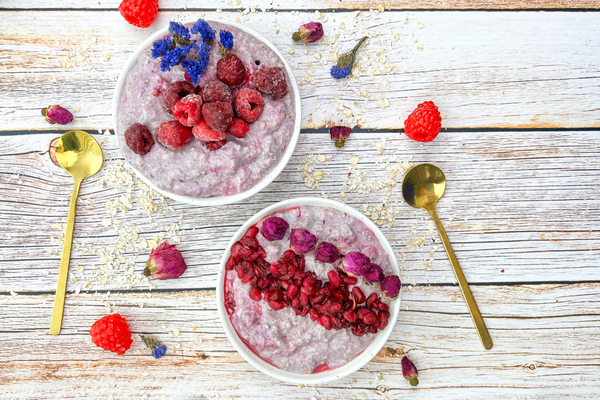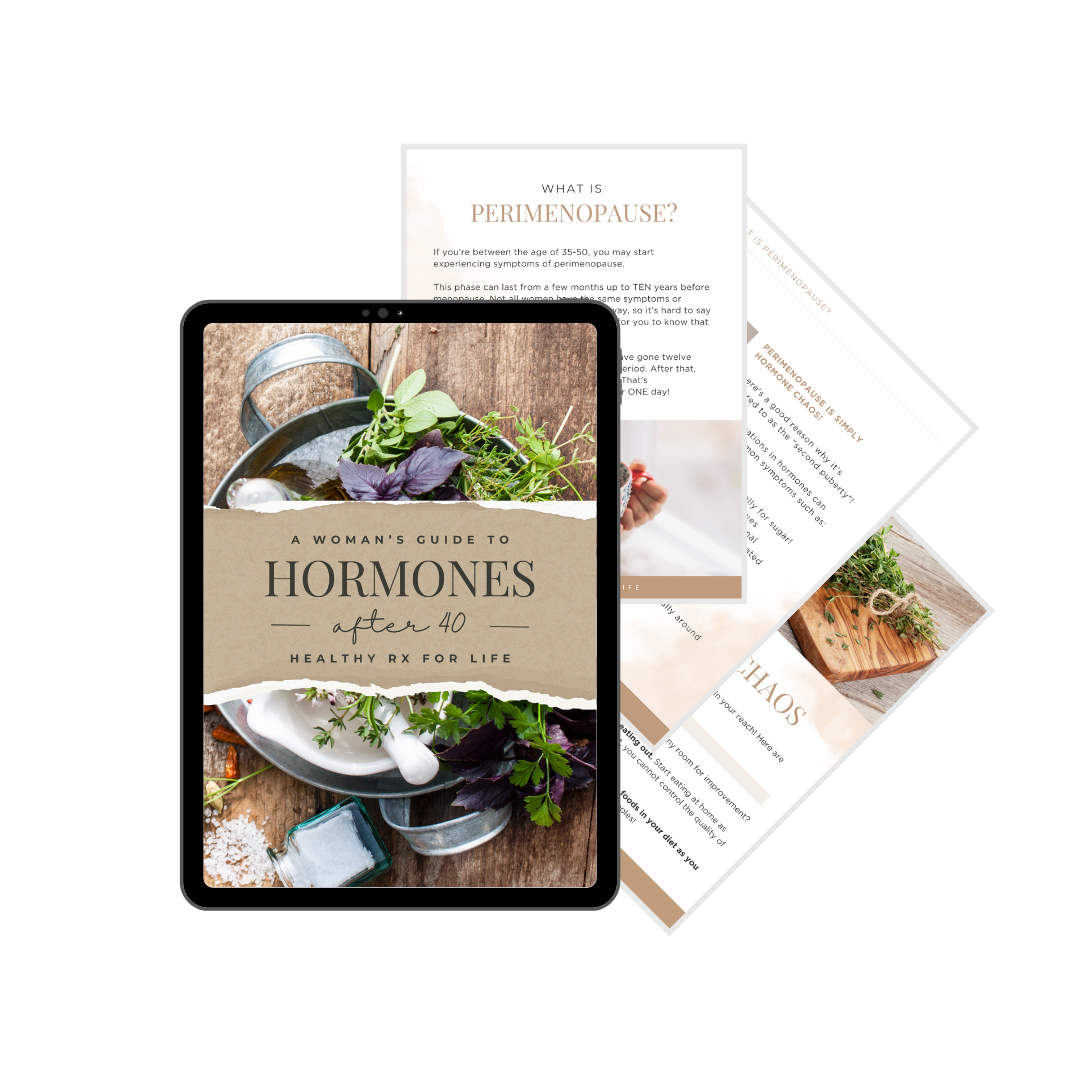If you’ve been dealing with mood swings, bloating, heavy periods, or fatigue, there’s a good chance your hormones are shifting. And no—you’re not imagining it, and it’s not “just part of getting older.”
One of the most common (and often overlooked) hormonal imbalances in midlife is something called estrogen dominance. It’s a phrase you may have heard floating around, but what does it really mean—and what can you do about it?
Let’s dive into what estrogen dominance is, how it shows up during perimenopause, and how you can start supporting your body through food.
What Is Estrogen Dominance?
First things first: estrogen dominance doesn’t necessarily mean you have too much estrogen.
Instead, it means your estrogen levels are too high in comparison to progesterone—another important hormone that works in balance with estrogen to regulate your menstrual cycle, mood, metabolism, and more.
Here’s why that matters:
During perimenopause (the transitional phase before menopause), progesterone is usually the first hormone to decline. That drop happens more quickly than estrogen, creating an imbalance where estrogen becomes relatively dominant—even if estrogen itself is normal or even on the lower side.
This hormonal mismatch can wreak havoc on how you feel!
Why Estrogen Dominance Is So Common in Midlife
As women enter perimenopause—usually in their mid-to-late 30s through their 40s—ovulation starts to become irregular. Since progesterone is only produced after ovulation, you may go entire cycles without producing much of it at all.
Meanwhile, your body may still be making a decent amount of estrogen (or storing it in fat tissue), especially if your liver isn’t clearing it efficiently or you’re being exposed to xenoestrogens (chemical compounds in plastics, cosmetics, and household products that mimic estrogen in the body).
All of this leads to one very common outcome: a hormonal imbalance where estrogen is outpacing progesterone.
Even if your estrogen levels aren’t “high” on a lab test, the ratio can still be off—leading to a host of frustrating symptoms.
Signs and Symptoms of Estrogen Dominance
Wondering if this might be what’s going on in your body? Here are some common signs of estrogen dominance:
-
- Heavy or irregular periods
-
- Worsening PMS (especially irritability or tearfulness)
-
- Breast tenderness or fibrocystic (lumpy) breasts
-
- Bloating and water retention
-
- Mood swings, low libido, or anxiety
-
- Headaches or migraines, especially around your cycle
-
- Fatigue or disrupted sleep
Estrogen dominance has also been linked to more serious conditions like fibroids, endometriosis, PCOS, and an increased risk of hormone-sensitive cancers like breast cancer.
But knowledge is power. And the good news? There’s a lot you can do to support your body naturally and start feeling better.
How to Support Estrogen Balance—Naturally
The key to restoring hormone harmony is working with your body, not against it. And one of the most powerful tools at your disposal? Food.
Nutrient-dense meals can help:
- Support your liver in metabolizing and eliminating excess estrogen
- Reduce chronic inflammation that can worsen hormonal imbalances
- Promote gut health (which is crucial for hormone detox)
- Stabilize blood sugar and cortisol—two big players in hormone health
- Encourage your body’s natural production of progesterone
What You Eat Matters—Here’s Why
Your body detoxes estrogen primarily through the liver and gut. If either of these systems is sluggish, estrogen can recirculate rather than being excreted—making symptoms worse.
That’s why a hormone-supportive diet includes:
-
- Cruciferous vegetables (like broccoli, cauliflower, and Brussels sprouts) to support estrogen metabolism
-
- High-fiber foods to help excrete excess hormones
-
- Healthy fats (like avocado, olive oil, and flaxseeds) to support hormone production
-
- Lean protein to help stabilize blood sugar and support tissue repair
-
- Fermented foods and prebiotics to nourish your gut microbiome
At the same time, it’s helpful to reduce processed foods, alcohol, and added sugars, which can worsen inflammation and throw hormones even more out of balance.
Ready to Support Your Hormones Through Food?
If all of this feels a little overwhelming, you’re not alone!
Most women I work with don’t need another diet plan—they need support and practical tools that help them feel empowered and nourished, not restricted.
That’s why I created the Peri/Menopause Recipe Bundle—a collection of hormone-supportive recipes designed to help you reduce symptoms and feel more like yourself again.
Inside the bundle, you’ll get:
- Five targeted recipe books to help support hormone balance
- Meal ideas focused on gut health, stress reduction, blood sugar balance, and better sleep
- Easy, delicious recipes that work with your body—not against it
Whether you’re dealing with heavy periods, mood swings, bloating, or fatigue, this bundle gives you the food-based foundation to support your hormones in midlife.






